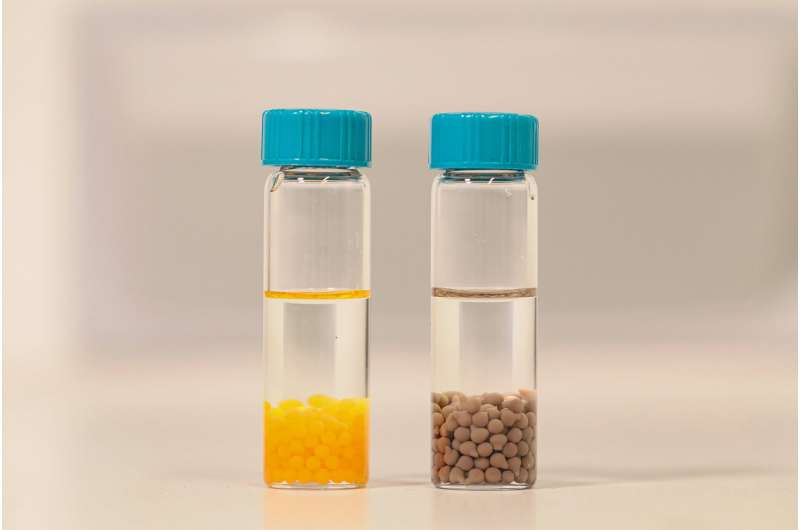Filtering out toxic chromium from water

Hexavalent chromium continues to contaminate water sources around the world, with one US company fined just this February for putting employees at risk. Hexavalent chromium is considered to be extremely toxic, especially when inhaled or ingested, and its use is regulated in Europe and in many countries around the world. It is thought to be genotoxic, leading to DNA damage and the formation of cancerous tumors.
Now, chemists at EPFL are developing energy efficient processes for removing contaminants, this time hexavalent chromium, from water. The results are published today in the Journal of Materials Chemistry A.
"Providing access to clean water is one of the most important challenges of our time," says lead author Wendy Queen of EPFL's Laboratory of Functional Materials. "The development of energy efficient processes able to rapidly remove water contaminants play an important role in our effort to globally improve human health and environmental well-being."
Queen and colleagues are developing sponge-like materials that can collect specific substances from solution. Their materials are actually crystals, called metal-organic frameworks (MOF), and the scientists are tailoring these crystalline structures to capture a particular substance.
The materials are extremely porous and the contact surface area contained in one gram of these MOFs can be as large as that of a football field. The target substance then enters these pores and sticks to the internal surface area in a process called adsorption.
The scientists have previously shown that their materials can efficiently adsorb other substances dissolved in solution, like gold, mercury and lead. For instance, 1 gram of MOF yields almost 1 gram of gold. Queen, in collaboration with EPFL scientist Berend Smit and EPFL Ph.D. student Bardiya Valizadeh, has demonstrated the extraction of hexavalent chromium from water. With hexavalent chromium, a relatively light substance, the MOFs can extract approximately 208 milligrams per gram of MOF. Also, if you shine light on the MOF, it then transforms the highly toxic hexavalent chromium into a relatively nontoxic trivalent chromium.
Further developments are required in order to implement the technology for decontaminating water outside of the laboratory.
"The great thing about our sponges is they are relatively easy and cheap to make," explains Queen. "The next step is to test our sponges at larger scales."
For example, the scientists expect 1 kg of MOFs to cost roughly 15 CHF to make, whereas 1kg of gold is worth roughly 55 000 CHF.
More information: Journal of Materials Chemistry A (2020). DOI: 10.1039/d0ta01046d
Journal information: Journal of Materials Chemistry A
Provided by Ecole Polytechnique Federale de Lausanne





















